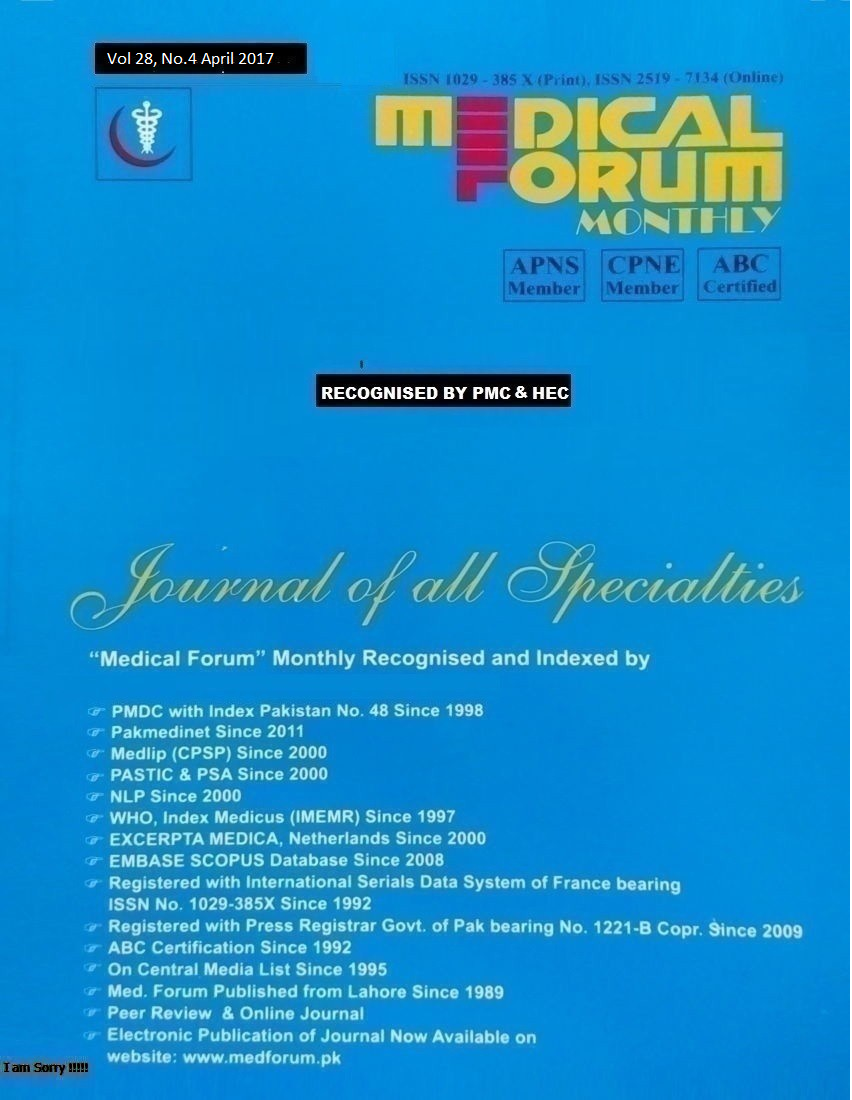
34. Obstructive Jaundice; A Diagnostic Challenge
Ansar Latif1, Aslam Iqbal Mazhar2 and Muhammad Akhtar3
ABSTRACT
Objectives: To ascertain causes of surgical jaundice and investigation modalities required for the diagnosis in our patients.
Study Design: Retrospective analysis for etiologies and investigation modalities.
Place and Duration of Study: This study was conducted at the Department of Surgery, Allama Iqbal Memorial Teaching Hospital of Government Khawaja Muhammad Safdar Medical College, Sialkot from June 2013 to February 2016.
Materials and Methods: Patients who were admitted having obstructive jaundice due to any etiology were enrolled for this study. Ninety-two patients who fulfilled inclusion criteria, patients of all age groups from any gender were included. Patients presenting in outpatients department and after being investigations were admitted for further investigations and treatment. Patients who refused admission for further investigations and surgery were excluded. Data collected using a proforma and analysis done with SPSS v 22 program.
Results: Out of 132 patients reporting in surgical outpatients, 112 patients were admitted for investigations and management of obstructive jaundice. Females patients were more in number than males with a ratio of 1:1.3. Subjects having malignant lesions were elderly than those of nonmalignant cases. Pancreatic head carcinoma being at the top in cancers and choledocholithiasis being the leading cause in benign group. The sonographic scan of the abdomen was the basic imaging performed in every patient which showed dilatation of biliary ducts both intra and
extra-hepatic level, ductal stones or tumours in 55.20%, 71.90%, 48.10% and 69.6% of the patients respectively. Computed Tomographic scan of the abdomen was done to stage and assess resectability in malignant cases and strictures. Magnetic resonance imaging was carried in 23 cases. A total of 92 (100%) patients got operated and the rest of 6 (5.2%) admitted patients who were not fit for surgery or anesthesia. The rate of morbidity remained 22.4%, leading was infective complications.
Conclusions: The early diagnosis has prime importance in the outcome in obstructive jaundice patients: ultrasonography a baseline imaging being done in every patient and even repeated in the same patients. Other investigations like PTC, ERCP, CT scan and MRCP are to be done for definite diagnosis and respectability of malignant causes. Blood chemistry has done repeatedly to monitor the progress of the disease and follow-up. Malignant lesions are in lead as compared to the benign reasons.
Key Words: Choledocholithiasis, KlatskinTumour, Cholangiocarcinoma, Obstructive jaundice, Percutaneous transhepatic cholangiography, Endoscopic Retrograde cholangiopancreatography,
Citation of article: Latif A, Mazhar AI, Akhtar M. Obstructive Jaundice; A Diagnostic Challenge. Med Forum 2017;28(4):132-135.
